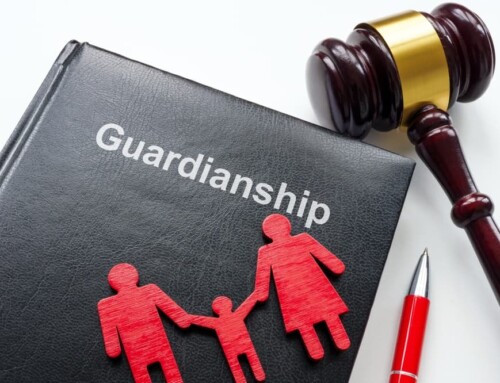One category of compensatory damages that might be recoverable in Florida personal injury claims is pain and suffering. Your potential pain and suffering damages include the non-economic losses you have suffered in your accident because of someone else’s negligent or wrongful actions. The value of your pain and suffering damages will depend on multiple factors, including but not limited to the severity of your injuries, your likelihood of recovery, past medical expenses, and the cost of anticipated medical care. Here is some information about how pain and suffering damages in Florida are calculated from the experienced injury lawyers at Robinson & Casey.
What Is Included In Pain & Suffering Damages?
Pain and suffering damages are the physical and emotional pain you have suffered because of the injuries you incurred during your accident (whether it be a slip and fall, car accident, motorcycle accident, medical mistake, or catastrophic injury). Types of pain and suffering damages include emotional trauma, including depression, anxiety, stress, grief, and mental anguish, loss of the enjoyment of life, disability, disfigurement and scarring, physical pain and suffering, and loss of consortium.
Since pain and suffering damages are noneconomic, they are more difficult to value than the pecuniary losses you might suffer. Economic damages include out-of-pocket losses you incur for your past and future medical expenses, wage losses, and property losses. Your pain and suffering damages are not meant to cover your pecuniary losses and are calculated separately. Pain and suffering damages are calculated based on the unique factors of your situation.
Factors Used When Calculating Pain & Suffering Damages
Some of the factors used when calculating pain and suffering damages include the type and severity of your injuries, whether your injuries are permanent or how long they are expected to last, your age, how your injuries disrupt your daily life, how your wellbeing has been impacted by your injuries, your emotional trauma, and whether you have suffered permanent disfigurement and/or scarring.
Since these factors vary from accident to accident, the value of pain and suffering damages also differs from case to case.
How Much Can You Ask For Pain And Suffering Damages in Florida?
Insurance companies might use the multiplier method, the per diem method, or a hybrid method to calculate the value of pain and suffering damages. Your personal injury lawyer will also calculate the value of your damages.
The multiplier method takes a number ranging from one to five and multiplies that number by your economic damages, including your medical expenses and wage losses. The multiplier chosen will depend on the extent and severity of your injuries. For example, if the insurance company chooses a multiplier of one when you have suffered $75,000 in economic losses, the insurance company will value your pain and suffering damages as also equaling $75,000. By contrast, if you have suffered $25,000 in economic damages and a factor of five is used, then your pain and suffering damages would be valued at $125,000. One issue with the multiplier method is the fact that it is arbitrary.
The per diem method involves assigning a set value for each day following your accident until you reach your maximum recovery. In this method, choosing a reasonable daily rate can be difficult. For example, if it takes you 200 days to reach your maximum recovery with a set daily rate of $200, your pain and suffering damages would be calculated by the insurance company as valued at $40,000. To make sure that your daily rate is reasonable, your attorney will likely use the amount of money you would normally earn each day. Insurance companies typically do not use the per diem method for injuries that take a longer period of recovery as in the above example. This is because doing so can result in a higher value. For that reason, most insurance companies use the multiplier method instead.
In the hybrid method, insurance companies combine the multiplier and per diem methods to calculate the damages. Adjustments will then be made based on the accident’s particular circumstanes.
Other insurance companies do not use any of the above-described methods and instead use computer algorithms to calculate the amounts. Your case might be valued based on the number of your medical expenses, the types of treatment you need and receive, and how long your treatment will last.
Documenting Your Pain and Suffering Damages in Florida
Since pain and suffering damages are meant to compensate you for your noneconomic losses, they can be difficult to value. A good way to help a jury understand what you have gone through is to keep a log or a journal of your pain following your accident.
Keep track every day of how your daily life is affected by your injuries and how they prevent you from doing the things you previously enjoyed. Keep track of your level of pain each day on a scale ranging from 1 to 10. Note how long your symptoms last and list any activities you are unable to perform. List any side effects you experience from your medication, how frequently you have to take pain medication, and any symptoms of anxiety and/or depression you experience. You should also take photographs of your injuries as they heal and retain documents, including medical records, that help to support the notes you write down in your pain journal.
Get Help From Robinson & Casey
If you have been injured in an accident that was caused by someone else, both your lawyer and the insurance company will separately calculate the value of your pain and suffering damages. After they have been calculated, your attorney will negotiate with the insurance company for you to try to secure a favorable settlement offer. The attorneys at Robinson & Casey have years of experience fighting for the rights of personal injury victims. To learn more about pain and suffering compensation and how it might affect the value of your claim, contact us today at 561-375-5204 for a free case evaluation.



